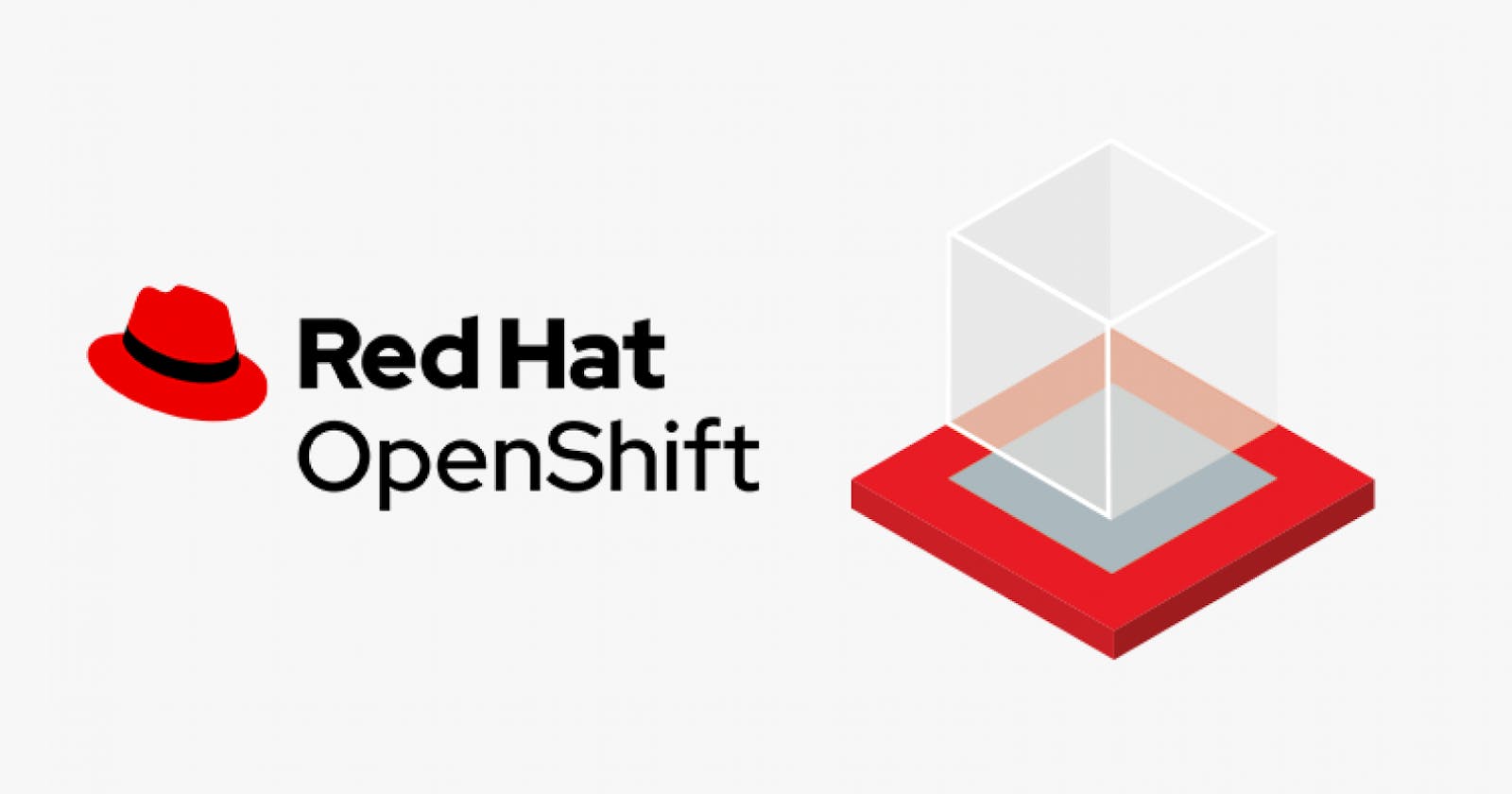What is OpenShift?
OpenShift is a family of containerization software offerings created by open-source software provider Red Hat. According to the company, Kubernetes is the kernel of distributed systems, while OpenShift is the distribution. At its core, OpenShift is a cloud-based Kubernetes container platform that's considered both containerization software and a platform-as-a-service (PaaS).
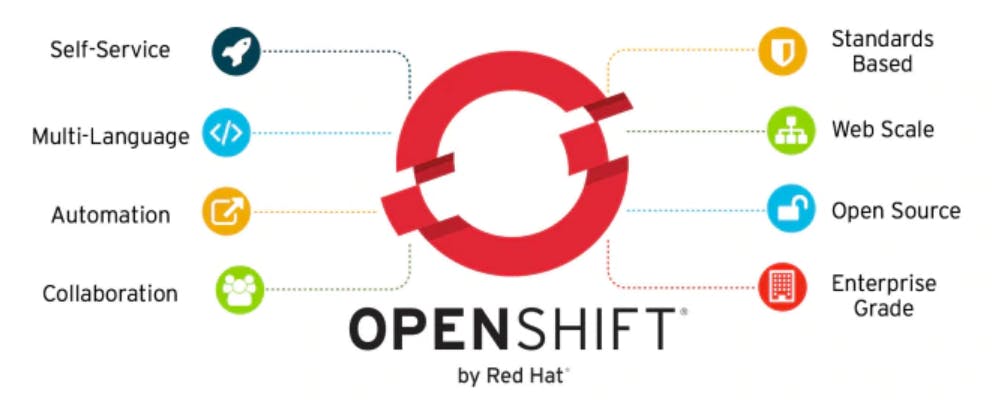
It’s also partly built on Docker, another popular containerization platform. OpenShift offers consistent security, built-in monitoring, centralized policy management, and compatibility with Kubernetes container workloads. It’s fast, enables self-service provisioning, and integrates with a variety of tools. In other words, there’s no vendor lock-in. Previously known as Origin, the open-source platform, OpenShift OKD lets developers create, test, and deploy applications on the cloud. It also supports several programming languages, including Go, Node.js, Ruby, Python, PHP, Perl, and Java.
Kubernetes Vs. OpenShift
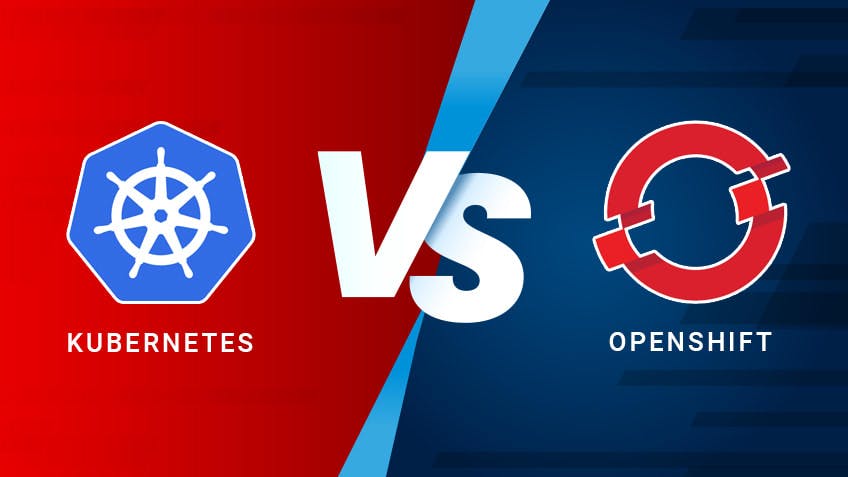
Both Kubernetes and OpenShift feature robust and scalable architecture that enables rapid and large-scale application development, deployment, and management. They both run on the Apache License 2.0. But that’s just about where the similarities end. Here are just a few of the many ways OpenShift and Kubernetes differ.
Deployment
Kubernetes offers more flexibility as an open-source framework and can be installed on almost any platform — like Microsoft Azure and AWS — as well as any Linux distribution, including Ubuntu and Debian. OpenShift, on the other hand, requires Red Hat’s proprietary Red Hat Enterprise Linux Atomic Host (RHELAH), Fedora, or CentOS. This narrows options for many businesses, especially if they're not already using these platforms.
Security
OpenShift has stricter security policies. For instance, it is forbidden to run a container as root. It also offers a secure-by-default option to enhance security. Kubernetes doesn’t come with built-in authentication or authorization capabilities, so developers must create bearer tokens and other authentication procedures manually.
Support
Kubernetes has a large active community of developers who continuously collaborate on refining the platform. It also offers support for multiple frameworks and languages. OpenShift has a much smaller support community that is limited primarily to Red Hat developers.
Releases and Updates
Kubernetes has an average of four releases each year, while OpenShift trails with around three. Similarly, Kubernetes supports several concurrent and simultaneous updates, while OpenShift DeploymentConfig does not.
Networking
Kubernetes lacks a networking solution but lets users employ third-party network plug-ins. OpenShift, on the other hand, has its out-of-the-box networking solution called Open vSwitch, which comes with three native plug-ins.
Templates
Kubernetes offers Helm templates that are easy to use and provide a generous amount of flexibility. OpenShift templates are nowhere near as flexible or user-friendly.
Container Image Management
OpenShift lets developers use Image Streams to manage container images, while Kubernetes doesn’t offer container image management features.
OpenShift Architecture
OpenShift is a layered system wherein each layer is tightly bound with the other layer using Kubernetes and Docker cluster. The architecture of OpenShift is designed in such a way that it can support and manage Docker containers, which are hosted on top of all the layers using Kubernetes. Unlike the earlier version of OpenShift V2, the new version of OpenShift V3 supports containerized infrastructure. In this model, Docker helps in the creation of lightweight Linux-based containers and Kubernetes supports the task of orchestrating and managing containers on multiple hosts.
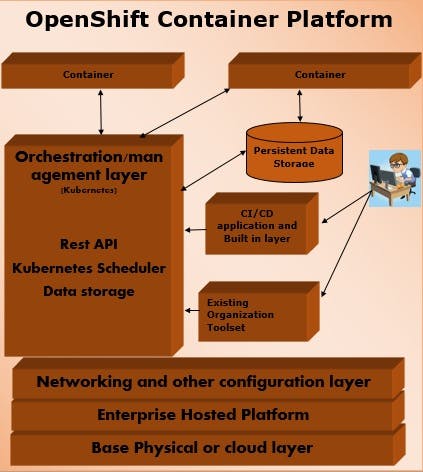
Key features and benefits
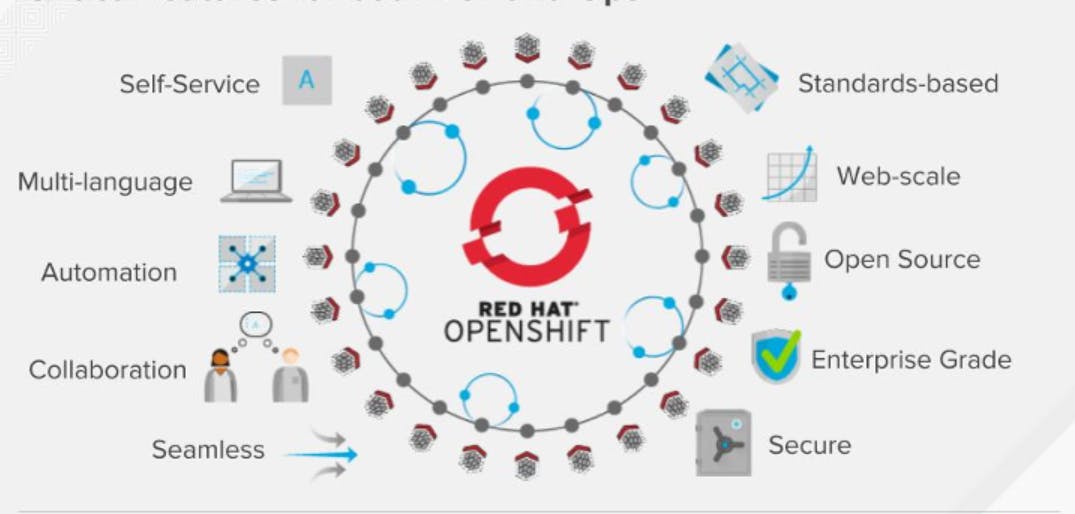
Open-source standards – Incorporates both Open Containers Initiative (OCI)/Docker-formatted containers and Kubernetes for container orchestration, in addition to other open source technologies. Users are not restricted to the technology or business roadmap of a specific vendor.
Self-service provisioning – Developers can quickly and easily create applications on-demand from the tools they use most, while operations retain full control over the entire environment.
Persistent storage – By providing support for persistent storage, the OpenShift Container Platform allows users to run both stateful applications and cloud-native stateless applications.
Polyglot, multilanguage support – Developers can use various languages, frameworks, and databases on the same platform with ease.
Automation – Streamlined and automated container and application builds, deployments, scaling, health management, and more are standard with OpenShift Container Platform.
User interfaces – Developers have direct access to a rich set of command-line tools, a multi-device web console, an Eclipse-based integrated development environment (IDEs), such as Red Hat CodeReady Studio (aka JBoss ® Developer Studio) and container-native CodeReady Workspaces.
Operational management – Red Hat Monitoring included in OpenShift Container Platform, gives users real-time visibility into their containerized application and infrastructure.
Scalability – Applications running on OpenShift Container Platform can easily scale to thousands of instances across hundreds of nodes in a matter of seconds.
Robust ecosystem – An ever-expanding ecosystem of partners provides a wide variety of integrations. Additional storage and network providers, IDEs and CI integrations, independent software vendor (ISV) solutions, and more are provided by these third parties for use with OpenShift Container Platform.
Container portability – Built on a standardized Linux container model powered by Red Hat application programming interfaces (APIs), applications created on OpenShift Container Platform can easily run anywhere that supports Docker-formatted containers.
Porsche: Case Study

Automotive IT service provider speeds development and delivery with container platform.
Porsche Informatik, IT service provider for the Volkswagen Group, needed to speed application development and delivery to stay competitive in a fast-paced global market. The organization used Red Hat OpenShift to create a private cloud container environment. Porsche Informatik’s developers can now take advantage of self-service capabilities, and teams across the organization can work together more effectively with a DevOps approach supporting continuous integration and delivery (CI/CD) workflows. As a result, Porsche Informatik has cut development time from weeks to hours and created a solid foundation to stay ahead of the competition. Read more here .
Softbank: Case Study
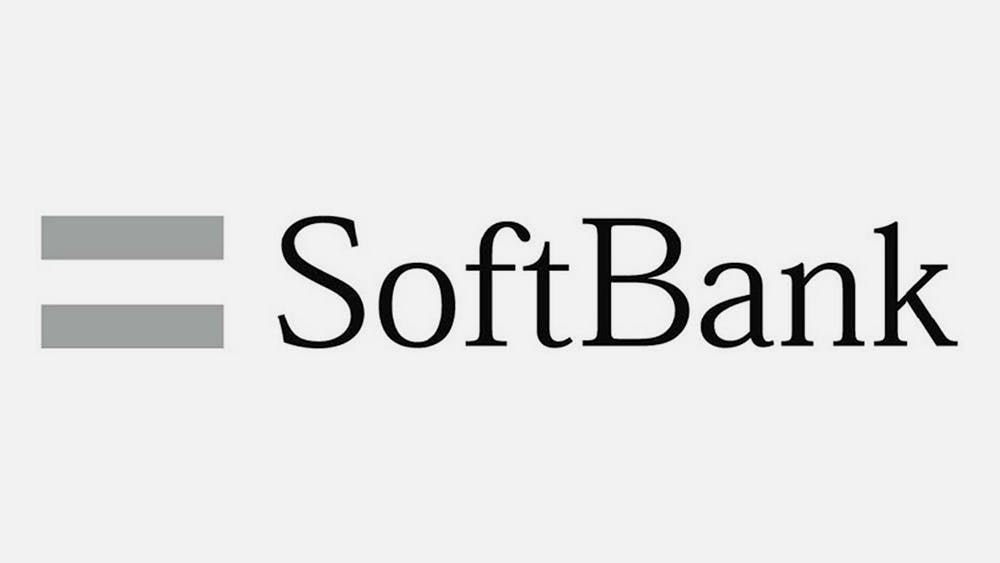
SoftBank Corp. adopts the agile DevOps approach.
To pursue its investment strategy and expansion into new business areas, telecommunications SoftBank Corp., part of the SoftBank Group, began an initiative to improve system development using a collaborative DevOps approach and container technology. Working with Red Hat Consulting, SoftBank Corp. learned best practices and established a roadmap to adopt DevOps for its Personal Agent Manager (PAM) project. The company also improved developer productivity, collaboration, and deployment frequency by adopting the Red Hat OpenShift Container Platform as the foundation of its application environment. Read more here .
UPS: Case Study

UPS streamlines tracking and delivery with DevOps and Red Hat .
UPS is a global leader in logistics, delivering more than 20 million packages per day. To enhance its services with better data insight and scheduling, the company decided to create a new application platform to give package facility operators mobile, real-time data access. With help from Red Hat, UPS created a flexible, agile, container-based cloud computing environment using Red Hat OpenShift Container Platform, Red Hat Enterprise Linux, and Red Hat Fuse. In addition, the company shifted to a more collaborative, iterative DevOps approach. Its developers can now work more efficiently to create new features for operations logistics and staffing, in turn improving the end customer tracking and delivery experience. The company is currently planning the transfer of the entire UPS.com infrastructure—more than 150 applications—to its expanded Red Hat infrastructure. Read more here .

